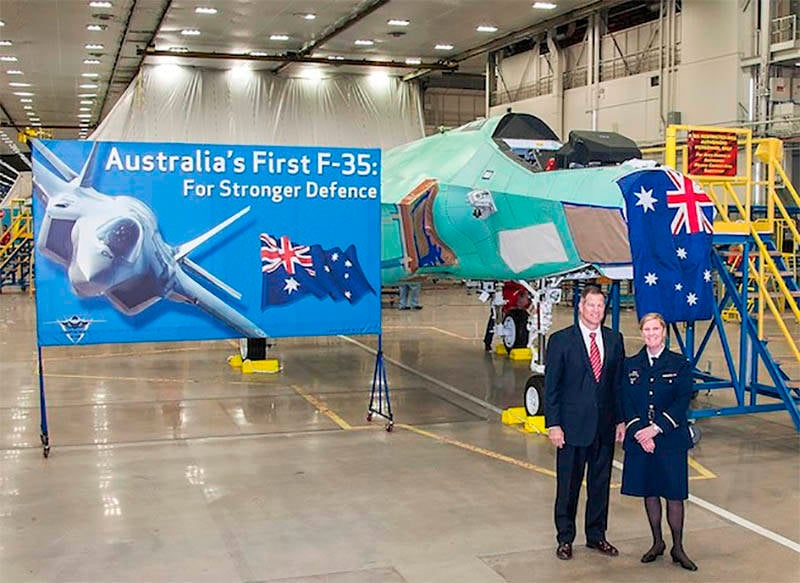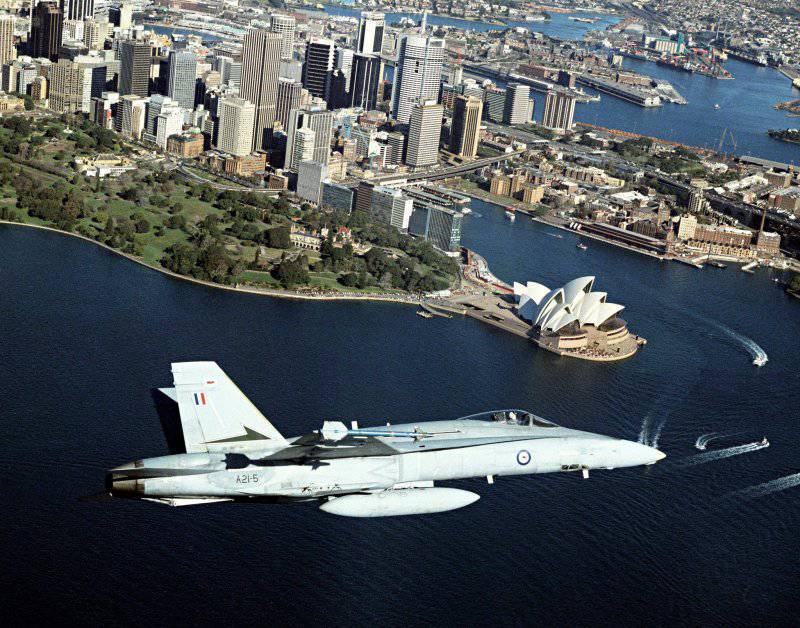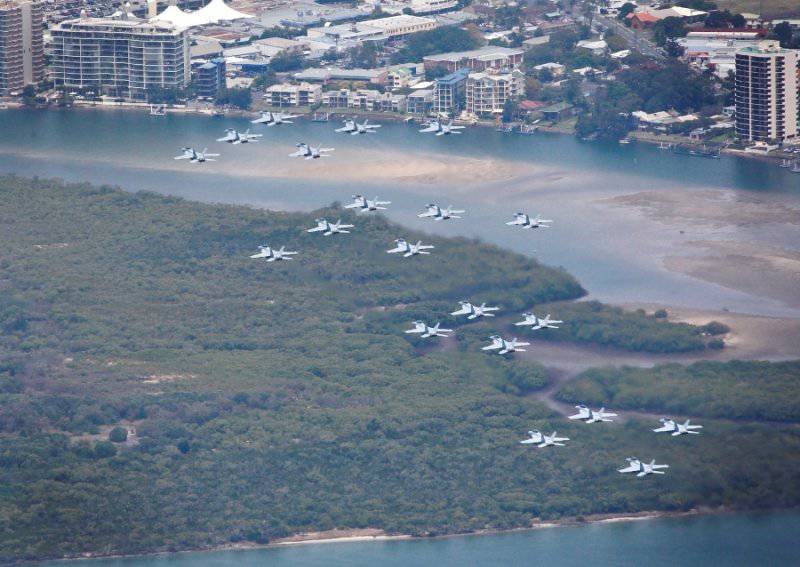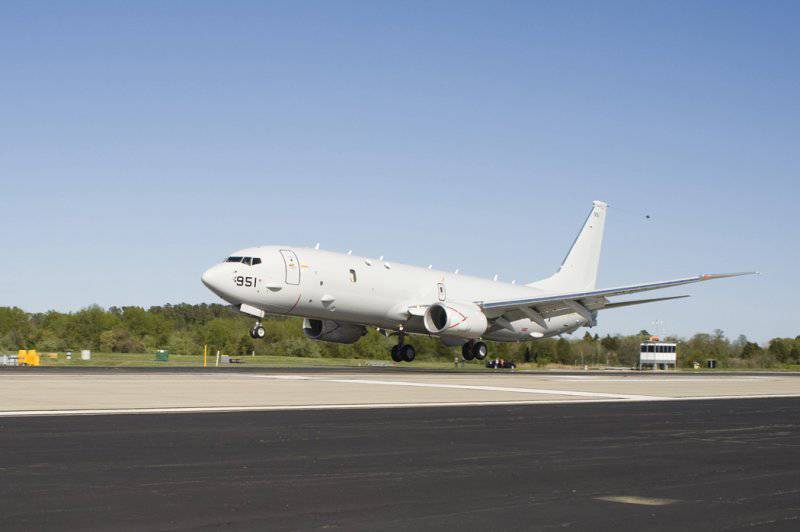Air shield of the Green Continent. "Through hardship to the stars"
Along with the Navy, the Royal Air Force is one of the key types of the Australian Defense Force. They and the fleet are entrusted with the task of protecting the Green Continent from a possible sea or air attack, covering sea communications, projecting power in the South Pacific, and participating in international operations to ensure global security and stability. To solve these problems, the Australian authorities have formed a compact but well-equipped Air Force and are implementing plans for their qualitative development.
Real
Today, the Australian Air Force is based on American fighters of the Hornet family: the fourth-generation F / A-69A / B 18 aircraft of the fourth generation of licensed production of the second half of 1980 (hereinafter the data on the number of aircraft are taken from Flightglobal World Air Forces 2014 report ") And 24 of the latest F / A-18F" Super Hornet "generation" 4 + ".
In the early 2000s, the F / A-18A / B underwent modernization as part of the Hornet Upgrade Program, during which their avionics were updated and support for modern weapons was added. Measures were also taken to increase the resource of aircraft to extend their service life to 2020. Thanks to the measures taken, the F / A-18A are quite modern fighter-bomber capable of withstanding most threats, and the number of people performing training tasks F / A-18B ( 15 aircraft) is enough to train and maintain the skills of fighter pilots aviation. 14 “Hornet” of the 75th Squadron are the only Australian Air Force aircraft to take part in actual combat operations over the past decades: in 2003, during the second war in Iraq, they performed 350 sorties. A curious fact is connected with their participation in the war, which visually characterizes the attitude of Australian society to this military conflict. The Australian Royal Air Force official website, in the historical section on the two Gulf Wars, talks about the role of Australian troops in maintaining order and rebuilding the Iraqi armed forces, but there’s not a word about the participation of military aircraft for the first time since the Vietnam War.
Serious delays in the entry into service of the fifth generation F-35A “Lightning II” fighter, written off in 2007 – 2010. F-111C / G "Aardvark" tactical bombers, moral and physical obsolescence F / A-18A / B made it necessary for Australia to replenish its air force with an "intermediate" aircraft to maintain combat capability at a high level. Undoubtedly, Indonesia’s adoption of modern Russian-made fighter jets, Su-27SK / SCM and Su-30МК / МК2, contributed to this. Despite the generally friendly relations, the close position on East Timor, the strengthening of the neighboring state cannot but cause concern among the Australians. Moreover, recently Indonesia indulges more and more courageous statements about Australia. Against this background, the quality superiority of Indonesia’s aircraft, which the Su-30MX2, undoubtedly, has in comparison with F / A-18A, is unacceptable for Australia, which is used to be head and shoulders above other countries in the South Pacific and Southeast Asia.
In 2007, Australia has signed a contract for the purchase of X / NUMX multi-role F / A-24F Super Hornet fighter jets, the newest at the time version of Block II with advanced avionics (in particular, with an onboard radar with an active phased antenna array). The initial operational readiness of the first squadron “Super Hornet” reached 18 in December, complete - in December 2010. All airplanes were purchased in two-seat modification, optimized for long patrols and execution of percussion tasks. Due to the dual management, it was not necessary to separately purchase training versions. Despite the small number, Super Hornet aircraft compensate for the obsolescence of F / A-2012A / B and are able to effectively perform any tasks that can be assigned to the Australian Air Force.
The specificity of the geographical position forces Australia to pay special attention to the protection of maritime communications and borders. These tasks in the Australian Air Force are performed by the Orion 18 AP-3C, which have been upgraded in 1997 – 2002. American P-3C "Orion" produced by the second half of the 1970's. Thanks to the broad avionics nomenclature, these aircraft, along with naval patrols, are capable of solving reconnaissance tasks - for ten years (from 2003 to 2012) they performed them in the Middle East in the interests of the coalition forces that fought in Iraq and Afghanistan. Although the upgrade has allowed to extend the life of the aircraft and bring them to a new level, by 2019, they will still need to be replaced due to the exhaustion of the resource.
In the development of the Air Force, serious attention is paid to air defense. Along with the “Super Hornet” for this purpose, in recent years, the E-7A “Wedgetail” long-range radar detection and control aircraft have been purchased. They were specifically designed for Australia based on the Boeing 737-700 medium-haul passenger aircraft. Six of these aircraft reached their initial operational readiness in November 2012, complete - at the end of 2013. These aircraft make it possible to detect and intercept aerial targets, including low-flying ones, at a sufficient distance. In addition, E-7A can also be used to detect and track surface targets. Nevertheless, the Australian air defense system cannot be considered fully reliable due to the lack of ground-based anti-aircraft missile systems (SAM). In addition to aviation, protection against air attack can be provided only by ship-based air defense missile systems. Currently, construction of modern Hobart-type destroyers is underway. However, the main protection is traditionally the geographical remoteness of densely populated areas located in the south and east of the continent.
Of great importance for Australia is the provision of aviation operations at a great distance from their bases. This task is solved by 5 of new KC-30A tankers, re-equipped by Airbus concern from A330 airliners and transferred by the Australian Air Force to 2011 – 2012. Expeditionary capabilities of the Armed Forces of Australia, which are key for this country, support the fleet of military transport aircraft - the X-NUMX strategic C-6 "Globemaster III" and the 17 multi-purpose C-12J "Super Hercules". These are new aircraft that will not require replacement in the foreseeable future. In order to expand the possibilities of transporting troops and cargo over medium distances, a contract was signed for the purchase of X-NUMX tactical transport aircraft C-130J “Spartan” with supplies starting from 10 in
Future
The Australian Air Force is actively buying new aircraft, and many positions (airborne aircraft, tankers, transport aircraft) are occupied by the newest aircraft worthy of first-class air force. Only two elements of the structure of the Air Force remain problematic, but by coincidence they are the most significant.

The basis of any modern air force is a multi-purpose fighter. Currently, this role in the Australian Air Force is played by the F / A-18A “Hornet”, which, as already noted, is rapidly becoming obsolete morally and physically. As a replacement for the 2002, the F-35A fifth-generation F-100A American multipurpose fighter "Lightning II" was selected, which was planned to be purchased in quantities of 22 units. An inconspicuous aircraft equipped with advanced avionics met the requirements of the Australian authorities, although some experts argued that for parity with China's promising fighter jets, Australia only needs F-2011A “Raptor” (the most famous statements on this are K. Kopp). At that time, it was assumed that in 35, the F-2012A would achieve initial operational readiness in the US Air Force, and in 111 would go to the Australian Air Force. The Australians could write off their F-XNUMXC / G relatively painlessly and gradually replace “Hornet” .
However, these dates were far from reality - now the initial operational readiness of the F-35A in the US Air Force is planned to be achieved in 2016. Australia will receive "Lightning II" only in 2019, and the initial operational readiness is reached before the end of 2020. Note that the first two aircraft destined for the Australian Air Force are already in the final stages of assembly and will be handed over to the customer in the summer of 2014. But in the coming years they will remain in the United States, where Australian pilots and technicians will work with American colleagues to learn how to operate a new car.
The delays forced Australia to purchase X / NUMX units as an “intermediate” F / A-18F “Super Hornet” aircraft. In the past few years, amid rising prices for the F-24A and postponement of its operational readiness, there have been proposals for additional purchases of Super Hornet, a decrease in the volume of purchases of Lightning II in the future and operation of a mixed fleet of fighters. It was planned to convert part of the “Super Hornet” fleet into electronic warfare (EW) aircraft and the suppression of the EA-35G “Growler” air defense system (there are currently no vehicles of this much-needed type in the Australian Air Force) and to additionally purchase “regular” F / A-18F. At the moment, a different, much more rational plan has been adopted: purchase EA-18G “Growler” in the number of 18 units in the USA right away, abandon plans to modernize existing aircraft, and if necessary, acquire an additional 12 F / A-12F.
The EA-18G “Growler” aircraft are designed to improve the Australian Air Force’s potential and, together with the upgraded F / A-18A and new F / A-18F, keep it at a fairly high level until the F-35A arrives. The government officially continues to adhere to the plan for the purchase of Lightning II in the amount of 100 units, but against the background of a possible additional acquisition of F / A-18F, we can confidently talk about the receipt of 72 units to form three squadrons. The final decision on the purchase of more aircraft designed to gradually replace already fleet "Super Hornet" will be adopted in the 2030s.
An interesting nuance of the possible future of “Lightning II” in Australia is the construction of two Canberra-type amphibious assault ships (UDC) for the needs of the Navy. The draft of these ships is based on the Spanish UDC “Juan Carlos I”. They have a springboard for aircraft with a short take-off, such as the F-35B (one of the modifications of the Lightning II). In general, fitness for basing the F-35B was originally one of the requirements of the Australian side (in particular, France proposed the UDC version of the Mistral with a springboard). However, it’s too early to talk about purchasing F-35B - the possibility of basing aircraft on the Canberra type UDC is still of interest to the Australian Navy only for the purpose of conducting joint operations with the United States Marine Corps.
Another element of the Air Force requiring replacement is naval patrol aircraft. For Australia, it is of particular importance because of the country's dependence on the security of maritime borders and routes of communication. In the Australian Air Force, naval patrol aircraft is represented by Orion aircraft, requiring replacement in the next five years. The replacement is already selected - this is undoubtedly the best P-8A “Poseidon” patrol aircraft to date. In 2017 – 2018 It is planned to purchase 8 of such machines. The high price does not allow replacing the Orion 18 in a one-to-one ratio, but the reduction in the number of manned patrol aircraft will probably be compensated for by purchasing heavy MQ-4C Triton UAVs. The latter were specifically designed for the US fleet based on the Global Hawk reconnaissance UAV RQ-4 for operations in conjunction with the Poseidon.
Air Force Place in the Australian Defense Forces
According to the White Paper on the Defense of Australia 2013, the following tasks were assigned to the Armed Forces of the country:
deterrence and repulse possible armed aggression;
strengthening stability and security in the South Pacific and East Timor;
cooperation to strengthen security in the Indo-Pacific region, especially in Southeast Asia;
cooperation for global security.
For the successful implementation of the tasks set, rearmament is being actively conducted and a high level of personnel training is maintained. Replacing outdated samples with modern technology is a very costly process, but vital for maintaining Australia’s position in the region. With the rise of Indonesia and the transformation of the Asia-Pacific Region (APR) into the arena of confrontation between the USA and China, Australia can no longer feel completely secure only due to its geographical position. Nevertheless, a direct clash with China is unlikely to occur, and modern and combat-ready armed forces can serve as a guarantee of good neighborly relations with Indonesia.
Despite the fact that the attack on Australia is unlikely, there are high chances for the country's participation in peacekeeping operations / interventions in small Asia-Pacific countries, which Australians attribute to their sphere of influence. The situation in these countries is far from stable, so it is likely that Australia will have to use force to protect its interests. In addition, she already has a successful experience of conducting similar operations in East Timor and on the Solomon Islands. As practice shows, aviation plays a key role in these operations: military transport planes provide a quick redeployment of troops, while attackers give interventionists and local allies a decisive advantage over the enemy. The serious attention paid by Australians to the re-equipment of transport aviation indicates that they take into account modern trends.
Allied relations between Australia and the USA are being strengthened. On the territory of Australia is located the American contingent. Military equipment is purchased almost exclusively in the United States, and this is similar to the one that is in service with the Americans. The personnel are jointly trained and trained: the first Australian pilots and technicians of F-35A fighters will be trained along with their American colleagues. Australian Air Force regularly take part in the US Air Force exercises. For example, several F / A-14A fighter-bombers and an E-1 Airliner aircraft were sent to the Red Flag 27-14 exercises, which took place from 2014 January to 18 in February 7. Close allied relations with the United States, besides the obvious preferences, impose serious obligations on the country - if necessary, the Australian Air Force will be involved in the conflict, as it has already been in Afghanistan and Iraq.
In conclusion, we can conclude that the quiet period for Australia ends. This is caused both by instability in a number of neighboring states and by the aggravation of superpower confrontation in the APR. It is very likely that in the foreseeable future, the Australian Air Force will have to join the battle not only as an ally of the United States, but also independently, and they are already preparing for this - slowly, but actively and conscientiously.



Information